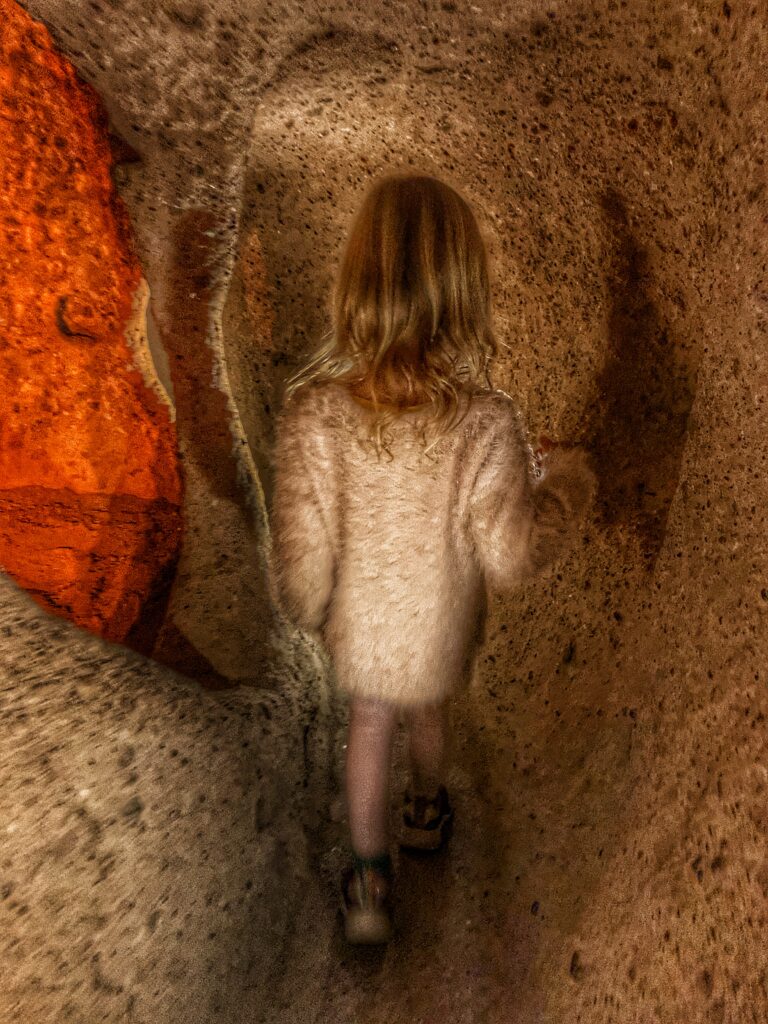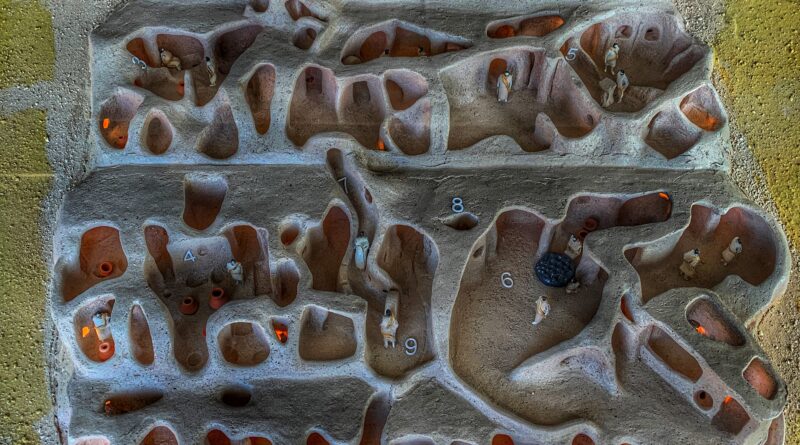Underground cities in Cappadocia
Cappadocia is a region in central Anatolia, Turkey, known for its unique geological formations, including cone-shaped rock formations called “fairy chimneys.” These natural structures, coupled with a history of human habitation dating back to the Hittite Empire in the 2nd millennium BC, have led to the creation of a series of underground cities in Cappadocia.
The underground cities of Cappadocia were primarily built as a means of defense and protection. They provided shelter from enemies and natural disasters, such as earthquakes and harsh weather conditions. However, they were also used for everyday living, with areas designated for cooking, sleeping, and storage.
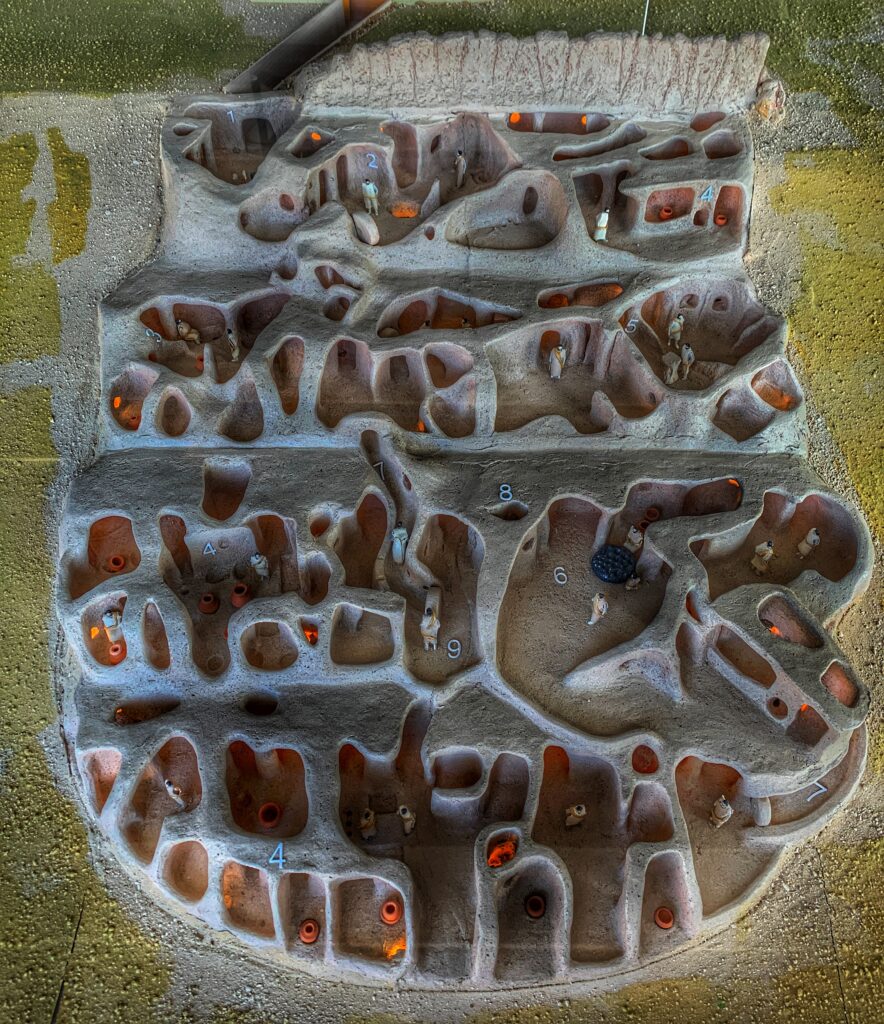
One of the most famous underground cities in Cappadocia is Derinkuyu. This ancient city is believed to have been built in the 8th or 7th century BC and was rediscovered in the 1960s. It is the largest and deepest of the underground cities in Cappadocia, with a depth of 85 meters (279 feet) and the ability to house up to 20,000 people. Derinkuyu has a complex system of tunnels, passageways, and chambers, including stables, wineries, and churches.
Another well-known underground city in Cappadocia is Kaymakli. This city is slightly smaller than Derinkuyu, with a depth of around 50 meters (164 feet) and the ability to house up to 8,000 people. Kaymakli is known for its intricate network of tunnels and rooms, including a chapel, a mill, and a winery. The Kaymaklı Underground City is a multi-level underground complex, with a total of five levels (open to the public, but 8 in total) that are connected by tunnels and stairs. The levels are arranged in a pyramid shape, with the lowest level being the widest and the upper levels becoming progressively narrower. The lowest level is thought to have been used for storage and as stables, while the upper levels were used as living quarters and for religious purposes. The underground city is also equipped with a ventilation system and a well to provide air and water for the inhabitants.
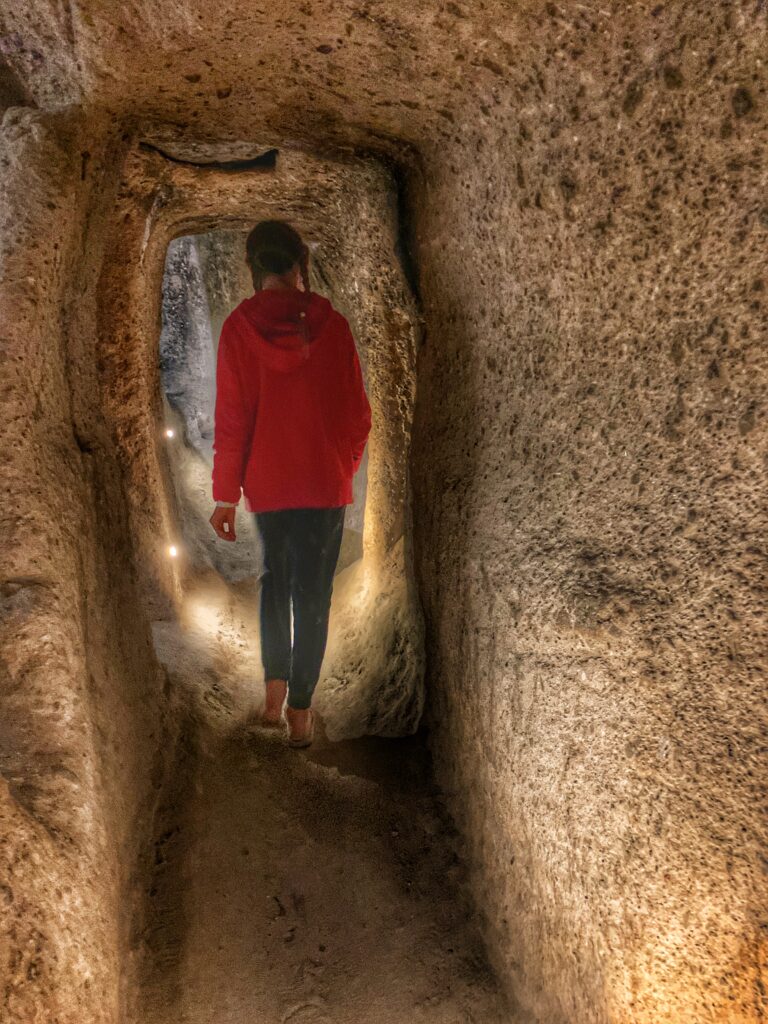
In addition to Derinkuyu and Kaymakli, there are several other underground cities in Cappadocia, including Ozkonak, Mazi, and Tatlarin. These cities, like Derinkuyu and Kaymakli, were built with the same purpose of providing protection and shelter for the people who lived in them. There are even talks about all underground cities being connected to each other! There is still lots to discover and learn about these places.
Today, the underground cities of Cappadocia are popular tourist attractions, offering visitors the opportunity to explore their tunnels and chambers and learn about their history and significance. They offer a glimpse into the lives of the people who lived in Cappadocia in ancient times and the challenges they faced. The underground cities are a testament to human ingenuity and the desire to survive and thrive in the face of adversity.
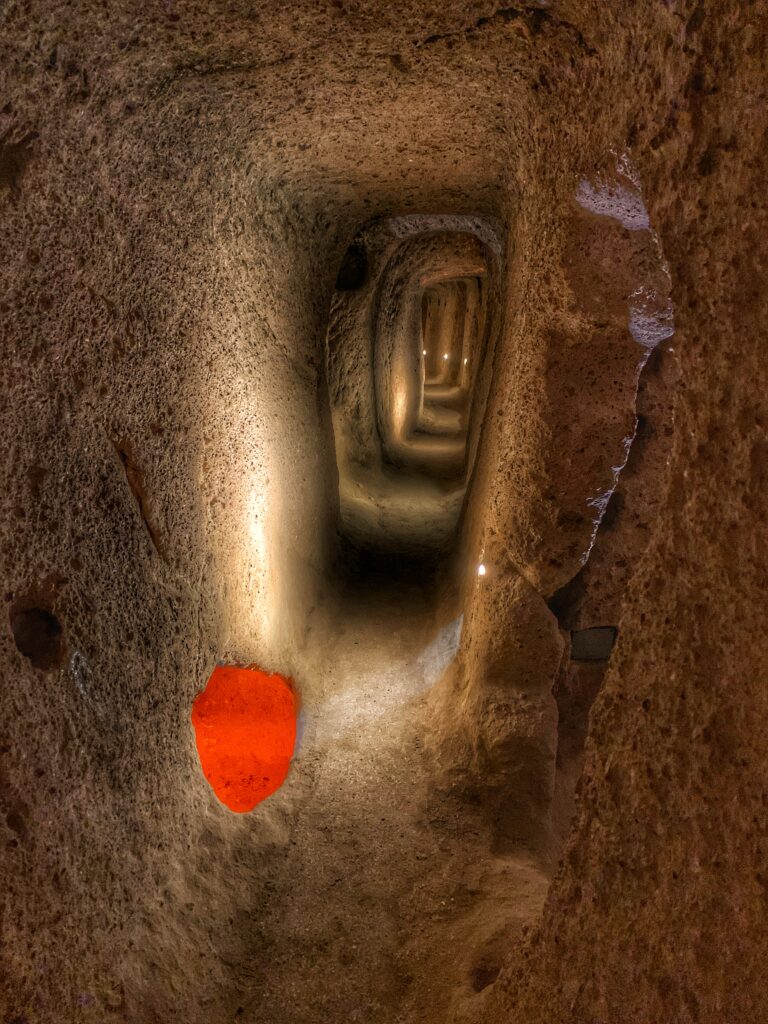
During our visit in Cappadocia, we visited the Kaymakli underground city. We were informed this one is best for kids to explore freely and be able to run around. It is the widest underground city open to the public at the moment. You can book a tour guide in advance or be lucky as we were and pick someone up on the go. Most guides speak fluent English. Our guide didn’t mind us sharing his price of 50 Euro with another family that just walked past us during price negotiations. The tour took about an hour, but you can roam around as long as you like. For our kids, 1 hour was enough. They loved discovering all the little chambers and imagining how families must have lived there years and years ago. Visits like these fit perfectly into our homeschooling education. Our kids seem to learn much faster by doing things, and experiencing first-hand rather than reading books!
